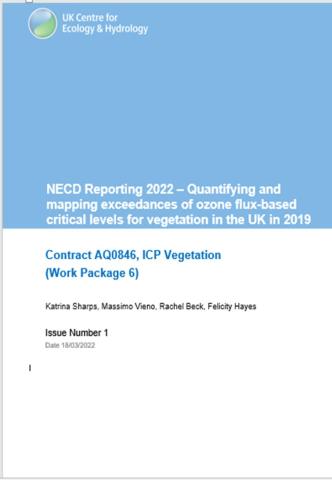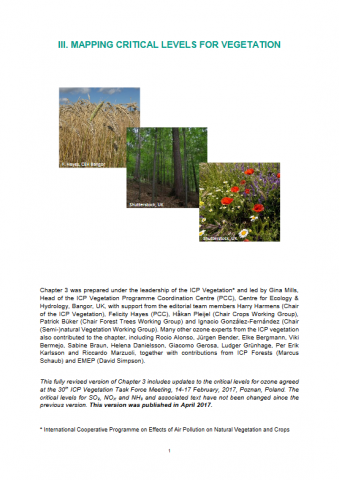| Title | Evidence of widespread effects of ozone on crops and (semi-)natural vegetation in Europe (1990-2006) in relation to AOT40-and flux-based risk maps |
| Publication Type | Journal Article |
| Year of Publication | 2011 |
| Authors | Mills G., Hayes F., Simpson D., Emberson L., Norris D., Harmens H., Buker P. |
| Journal | Global Change Biology |
| Volume | 17 |
| Pagination | 592-613 |
| Date Published | Jan |
| ISBN Number | 1354-1013 |
| Accession Number | WOS:000284851500048 |
| Keywords | ozone |
| Abstract | Records of effects of ambient ozone pollution on vegetation have been compiled for Europe for the years 1990-2006. Sources include scientific papers, conference proceedings, reports to research funders, records of confirmed ozone injury symptoms and an international biomonitoring experiment coordinated by the ICP Vegetation. The latter involved ozone-sensitive (NC-S) and ozone-resistant (NC-R) biotypes of white clover (Trifolium repens L.) grown according to a common protocol and monitored for ozone injury and biomass differences in 17 European countries, from 1996 to 2006. Effects were separated into visible injury or growth/yield reduction. Of the 644 records of visible injury, 39% were for crops (27 species), 38.1% were for (semi-) natural vegetation (95 species) and 22.9% were for shrubs (49 species). Owing to inconsistencies in reporting effort from year to year it was not possible to determine geographical or temporal trends in the data. Nevertheless, this study has shown effects in ambient air in 18 European countries from Sweden in the north to Greece in the south. These effects data were superimposed on AOT40 (accumulated ozone concentrations over 40 ppb) and POD3(gen) (modelled accumulated stomatal flux over a threshold of 3 nmol m-2 s-1) maps generated by the EMEP Eulerian model (50 km x 50 km grid) that were parameterized for a generic crop based on wheat and NC-S/NC-R white clover. Many effects were found in areas where the AOT40 (crops) was below the critical level of 3 ppm h. In contrast, the majority of effects were detected in grid squares where POD3(gen) (crops) were in the mid-high range (> 12 mmol m-2). Overall, maps based on POD3(gen) provided better fit to the effects data than those based on AOT40, with the POD3(gen) model for clover fitting the clover effects data better than that for a generic crop. |
| Short Title | Global Change BiolGlobal Change Biol |
| Alternate Journal | Global Change Biol |

